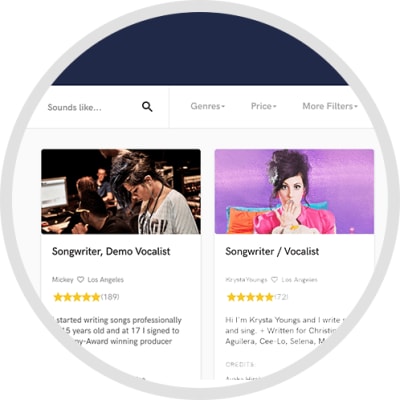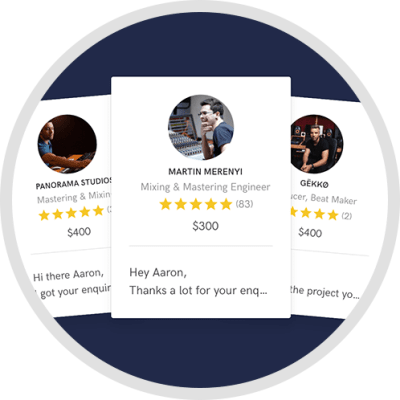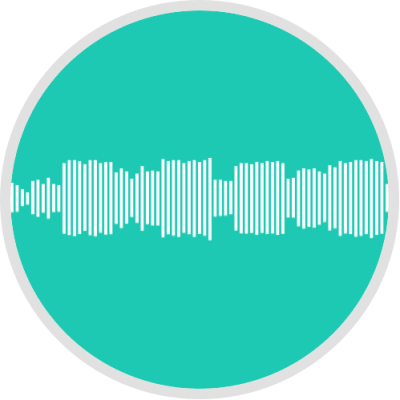
The first commercial Immersive Audio focused studio in Connecticut, accommodating up to 7.1.4. formats.
For music production I offer Recording, Mixing & Mastering.
For Audio Post I offer Mixing, ADR (Source Connect, Audio Movers) Sound Design, Music Composition, and Voiceover.
Remotely attended sessions are possible using Source Connect or Audio Movers. You can be sitting in your home, or studio, and attend any session with me in real time.
Using the skills and experience I have developed over the years from both the studio, and live on tour, I always strive to get the best performance possible out of each artist I work with. I am comfortable in working across many genres.
Originally from the UK, I have been playing musical instruments since the age of 7. After acquiring a greater interest in sound engineering, I gained a certificate in music technology at Liberty Hall Studios in London. From there in 2005 I started engineering at Don Airey's (Deep Purple) production studio Rainbow Recorders (Don Airey Music Ltd) in the UK, eventually leading to me running his studio until I left to cross the pond. While at Rainbow Recorders, I contributed to over sixty albums, including Deep Purple’s Now What?!, Saxon’s Call To Arms, Michael Schenker’s Temple of Rock, and many more, in addition to engineering all of Deep Purple’s live intro music since 2006 that are still used to this day.
Tell me about your project by clicking on the 'Contact' button. Lets get to work!
Click the 'Contact' above to get in touch. Looking forward to hearing from you.
Credits
AllMusic verified credits for Nathan SageInterview with Nathan Sage
Q: What's the biggest misconception about what you do?
A: Mixing is not mastering. Some clients get those two confused.
Q: What's your typical work process?
A: WHEN RECORDING MUSIC; I always like to meet the artist in person through a studio tour and a chat about their project. Next step is to have the artist come in for pre-production which is one day for a rehearsal where I can assess if there are areas that need work on before recording. Once I am confident that the artist is good to record, we set up a day where we can go through the structure of each song, and if we are not recording the artist live we will set up the guide tracks on the same day. Once pre-production is complete, it’s time to record. WHEN MIXING MUSIC; If I am mixing songs for a project I recorded I like to leave at least a week from the last day of recording when possible. I generally don’t mix on the same day as recording. When mixing music that has been recorded elsewhere I like to get as much information as possible from the artist or producer regarding what their original vision for the song is, and preferably a rough mix of what they have worked on. When mixing is completed I send out to the artist and/or producer for feedback. I include up to three mix revisions in mixing fee. WHEN MIXING POST AUDIO (Sound Re-Recording); as soon as I receive the OMF file from the editor I start with track set up for Dialogue, FX, Foley, and Music, then move onto audio clean up and restoration. At this point, if I have been asked to do additional Sound Design I will choose suitable samples etc. that match as close as possible to the existing project. Once I am comfortable with having everything in place I move onto mixing. The mix is then sent to the Director and I ask to provide any notes they have. Once any notes have been worked on and everyone is good with the mix the final mix is sent back to the editor.
Q: What questions do you ask prospective clients?
A: What is your goal? What is your deadline?
Q: What's your 'promise' to your clients?
A: I promise to give clients the best possible representation of their work, my studio's slogan is "Your Vision. Your Sound." its not about us, its about the client.
Q: Analog or digital and why?
A: Both. Digital is recallable, and high end outboard gear adds character.
Q: What was your career path? How long have you been doing this?
A: 15 years.
Q: Tell us about your studio setup.
A: My studio 'Sage Sound Studios' is the first commercial Immersive Audio studio in Connecticut. I can work in formats from stereo through to 7.1.4.
Q: What other musicians or music production professionals inspire you?
A: One of my key musician inspirations is Don Airey (Deep Purple), who I worked for in the past. I used to drum in bands, got signed to small indie labels etc. one of the most truest and profound statements that stands out to me to this day was when Don said "you're an engineer that wants to be a drummer", very powerful words which were of course true! I learnt a lot through working with Don, for example getting into the practice of the tape is always rolling, coupled with discipline and patience.
Q: Describe the most common type of work you do for your clients.
A: For music production, recording & mixing is the most common type of work. In Audio Post, post mixing and sound design is the most common area.
Q: Can you share one music production tip?
A: For musicians; practice outside of the studio, not in the recording session.

I was the Recording Engineer, Mixing Engineer, Producer in this production
- Recording StudioAverage price - $500 per day
- Mixing EngineerAverage price - $250 per song
- Post MixingAverage price - $150 per minute
- Surround 5.1 MixingAverage price - $200 per minute
- Sound DesignAverage price - $250 per minute
- Live SoundContact for pricing
- Avalon
- Focal
- JBL
- Manley Labs
- Millennia
- Neumann
- Stam Audio
- Telefunken
- Trident...
I am always happy to discuss my rates, please feel free to get in touch for a custom made quote



